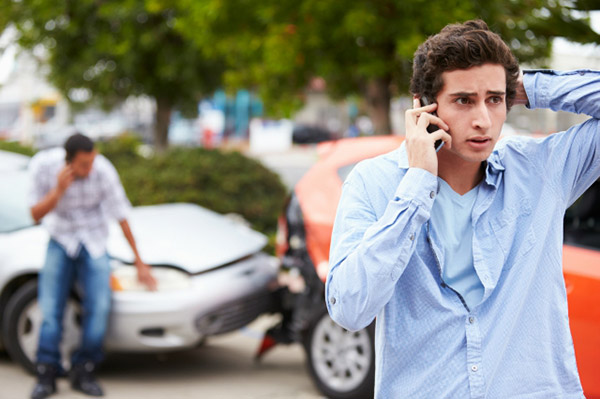5 tips when the other driver won’t share insurance information

Car accidents are never good, but encountering a driver who refuses to share his or her insurance information following a crash can make a bad situation worse.
If another driver refuses to give you the required information, don’t panic. Not getting the information you need right away doesn’t mean you’ll get stuck paying for medical or auto repair bills.
Learn what your rights are and what you can do to protect yourself in this situation.
What to reveal
According to the National Association of Insurance Commissioners, you should only reveal the information that is necessary. Following an accident, drivers are typically required to provide their name, vehicle information, and insurance information including the company’s name, policy number and claims phone number. Revealing additional information — such as your address, Social Security number and driver’s license number — could place you at risk for identity theft.
If you’re unsure what your state requires you to disclose to other drivers following an accident, call your local police department for clarification.
Who’s responsible for paying?
If the other driver caused your accident, that person’s insurance company will be legally responsible for both auto repairs and medical bills, unless you live in a no-fault insurance state. If you do, your own carrier typically will pay for your medical treatment and lost wages, no matter who was at fault. The at-fault driver will remain responsible for the cost of repairing vehicle damage.
Every state except New Hampshire requires drivers to carry a minimum amount of liability insurance. If the other driver is uninsured and you carry collision coverage, you can file a claim with your own insurance company.
Uninsured/underinsured motorist coverage can also help. This covers damage to your car or injuries to you and your passengers that are caused by an uninsured or underinsured driver. If the other driver leaves the scene of the accident without sharing insurance information, your insurer will treat him as an uninsured driver, says Kevin Foley, a New Jersey insurance agent.
Follow these five steps if the other driver won’t share insurance information.
1. Remain calm
It’s important to remain calm if the other driver refuses to share insurance information. If you get into a physical fight, you could be hurt or charged with assault. If a polite request for the information is unsuccessful, simply walk away, says Carole Walker, executive director of the Rocky Mountain Insurance Information Association.
“You really have to put your own personal safety first,” she says.
2. Notify the police
You should notify the police whenever you’re involved in a traffic accident, says Walker. Be sure to let them know if the other driver has refused to share his or her insurance information, and ask for assistance.
The investigating officer typically will take statements from the drivers and the passengers of both vehicles. Having a police report to review will make your insurer’s job easier. This document also can help establish your claim if you need to take the other motorist to court to recover auto repair or medical expenses.
“You want to make sure you have as much documentation as possible,” Walker says.
The police in some municipalities won’t respond to accidents if there are no injuries. In such cases, you’ll need to collect information on your own.
3. Gather information
Always attempt to get an uncooperative driver’s license plate number, says Mary Bonelli, a spokeswoman for the Ohio Insurance Institute. If you do, there’s a very good chance the police and your insurer will be able to track down the other driver.
Write down a description of the vehicle. If there are witnesses, write their names and contact information, and share it with the police and your insurance carrier.
As soon as you have the opportunity, create a diagram of the street where the accident occurred and write down what happened. Include the direction in which each vehicle was traveling at the time of the crash and their approximate speeds.
4. Take photos
Smartphones have placed cameras at almost everyone’s disposal. Take time to document the accident scene with a camera or a camera-equipped cellphone. If your memory is hazy after the accident, photographs will show the damage to the vehicles. Photographing the position of vehicles following an accident can help your insurer determine how the accident occurred.
“The best way to document is to take photographs of the crash scene,” Walker says.
Janet Ruiz, a spokeswoman for the nonprofit Insurance Information Institute, says it’s a good idea to take photos of drivers who won’t share information, if you can do so without endangering yourself. These photos can be used later to establish who was driving the other car.
5. Notify your insurance company
The sooner you notify your insurer, the sooner the claims process can begin. Typically, you’ll hear back from a claims representative within a day, Foley says. The process will be easier if you’ve familiarized yourself with your car insurance policy in advance. Confirm that the information you provide to your insurance company will be filed with your insurer’s claims office.
